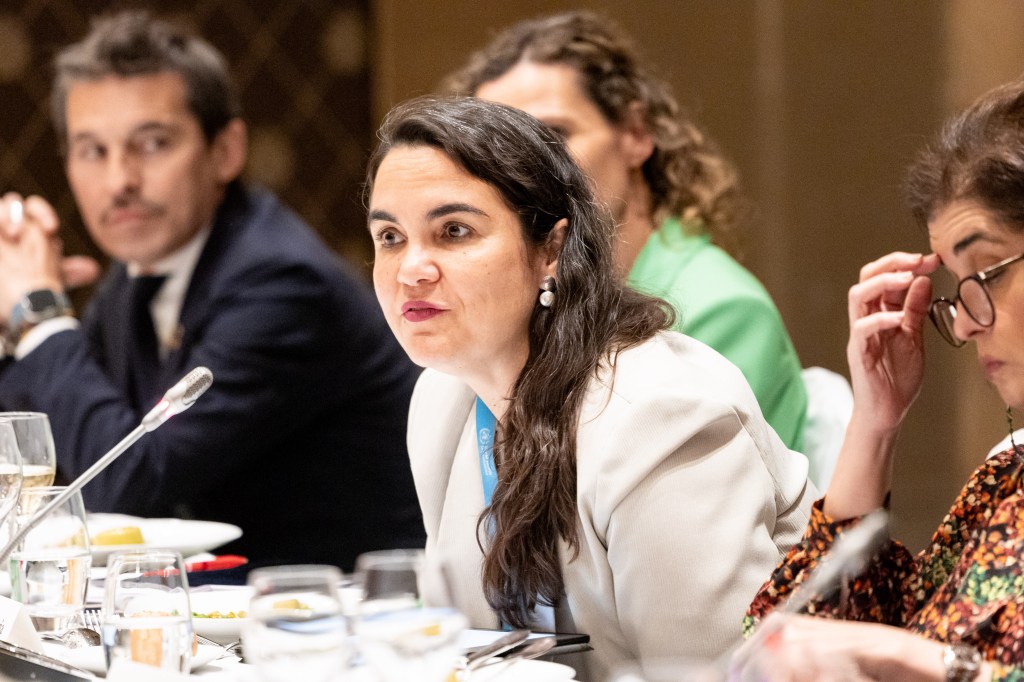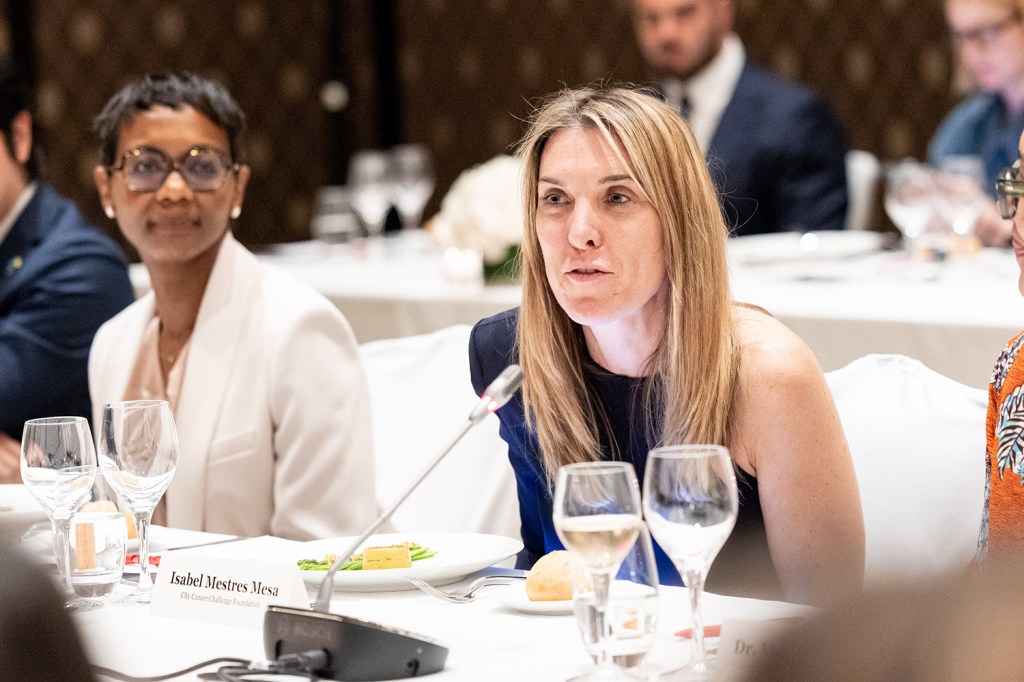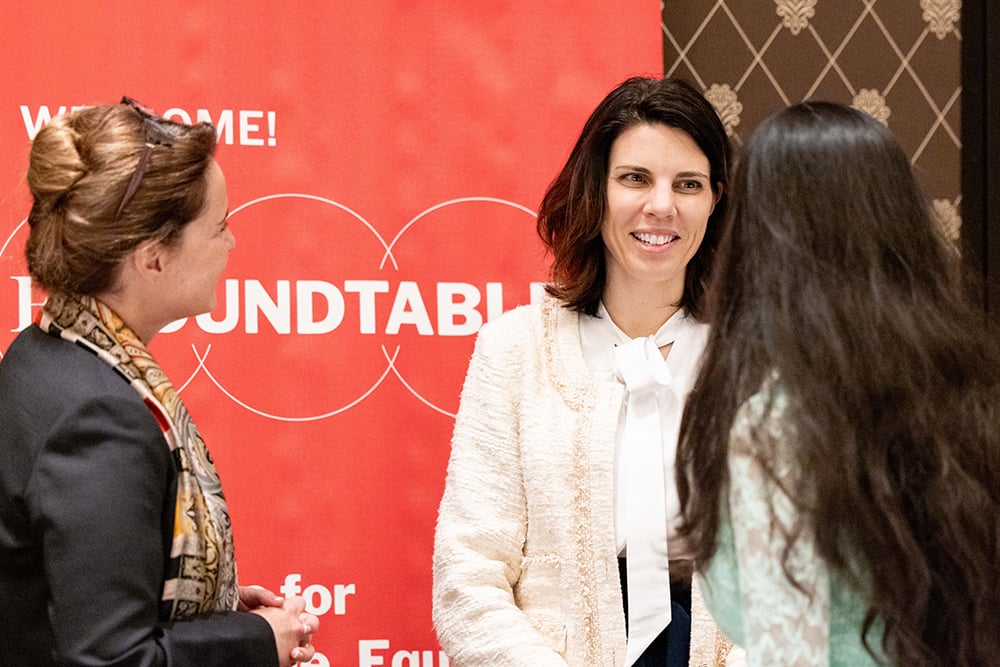A synthesis report from a high-level roundtable at the 78th World Health Assembly in Geneva, Switzerland
Non-communicable diseases (NCDs) are the leading cause of death worldwide, accounting for three in four deaths each year. NCDs include conditions such as cardiovascular diseases, diabetes, cancer, and chronic respiratory diseases, many of which are linked to modifiable risk factors like poor diet, tobacco use, alcohol consumption, and physical inactivity. While NCDs affect populations in every country, low- and middle-income countries (LMICs) face a disproportionate and growing NCD burden. By 2030, NCD deaths in LMICs are expected to account for three-quarters of all NCD deaths and 85 percent of premature deaths. Yet, as many as 80 percent of these conditions can be prevented or delayed into old age through affordable, evidence-based interventions.
Nevertheless, NCD-targeted interventions remain underfunded and undervalued, both by LMIC governments and the global donor community. Over the past two decades, NCDs have accounted for less than 2 percent of total development assistance for health. This imbalance between disease burden and investment has left many health systems ill-equipped to manage the rising NCD challenge. As the gap between current funding levels and health care costs widens, innovative financing solutions are critical to ensuring sustainable and equitable access to quality health care.
Against the backdrop of the 78th World Health Assembly, Foreign Policy, with sponsorship from Takeda, convened a diverse group of stakeholders from across the health industry, multilateral institutions, and civil society to discuss innovative funding models for NCDs. Held under the Chatham House Rule, the following summarizes insights from the conversation, presented without attribution.

Key takeaways
Public-private partnerships + philanthropy are crucial for overcoming funding shortfalls and driving innovation in healthcare.
Addressing the growing burden of NCDs requires new models of collaboration that go beyond traditional funding channels. Public-private partnerships that also leverage the catalytic and impactful role of philanthropy can help to mobilize resources and scale innovation by harnessing the distinct strengths of the sectors. Specifically, governments provide policy direction and ensure equitable access; the private sector brings technical expertise and scalable delivery models; and philanthropies help bridge early-stage risk and promote long-term, equity-driven solutions. When grounded in local needs and supported by civil society, these actors and partners can accelerate the development of sustainable, context-appropriate interventions for NCD prevention and care.
Development banks are also essential partners in this equation, given their financial resources, technical expertise, and development mandates. Participants pointed to the Financing Accelerator Network (FAN), a partnership among Access Accelerated, the World Bank, and Results for Development, as an example of development banks’ role in these partnerships. By leveraging partnerships across sectors, FAN aims to help countries scale innovative NCD-related practices and policies by providing data, technical support, and access to seed funding. Similarly, Gavi, the Vaccine Alliance, also offers a compelling blueprint for how cross-sector partnerships can shape markets, lower costs, and expand access to preventative treatments. Indeed, Gavi’s use of pooled procurement and demand forecasting successfully lowered costs and improved vaccine access in LMICs, an approach that could be adapted to build sustainable markets for NCD diagnostics, medicines, and chronic care models.

Blended finance and financial tools, such as sustainable-linked bonds and parametric insurance, could be alternatives to traditional aid.
Building on the potential of 4P models, participants emphasized the need to expand the health financing ecosystem through innovative financial instruments. With traditional aid for NCDs limited, unlocking private and philanthropic capital is essential. Blended finance emerged as a promising strategy to attract capital to areas where more conventional funding falls short. Blended finance offers a structuring approach that combines concessional, catalytic, and commercial capital, often with public or philanthropic actors absorbing greater risk to improve the risk-return profile for private investors. Participants highlighted successful initiatives, such as the Development Impact Bond led by Merck for Mothers and the Climate and Health Catalytic Fund launched by the Global Fund with the Gates Foundation and Foundation S, to illustrate how modest, risk-sharing investments can build market confidence and unlock larger funding flows. Though promising, health is under-represented in the blended finance market, making up only 5 percent of all deals. Expanding access to blended finance options in health will require further investments in feasibility studies, outcome-based design, and long-term technical support.
Discussions also explored sustainable-linked bonds and parametric insurance as potential innovative avenues for NCD financing. Sustainable-linked bonds connect capital costs to achieving health or sustainability targets, encouraging improved outcomes and attracting impact-focused investors. Parametric insurance offers rapid, data-driven payouts that help health systems manage financial shocks, such as natural disasters or pandemics, that can disrupt NCD care delivery. These mechanisms broaden the health financing ecosystem and may align market incentives with long-term NCD prevention and treatment goals.

Unlocking government health financing in LMICs requires reframing spending as an investment and debt restructuring.
Despite growing evidence that investments in preventative and primary health care generate substantial economic returns, national budgets in LMICs often under-prioritize health spending for a variety of reasons. In 2022, average government health spending in low-income countries was just $8.80 per capita, compared to $2,678 in high-income countries. This disparity reflects the systemic fiscal constraints that LMICs face, including low tax compliance, informal labor markets, and rising debt burdens. Minimizing debt burdens through restructuring presents a notable and near-term way to create more fiscal space for health investments. In 2019, 54 LMICs spent more on servicing external debt than on their health systems. Debt restructuring is therefore a critical strategy to free up resources for health investments. Debt-to-health (D2H) swaps, which convert debt repayments into funding for health programs, were highlighted as innovative tools with proven success in infectious disease control and strong potential for financing NCDs.
Other suggested approaches to increase health funding and address resource constraints included taxes on tobacco, alcohol, and sugary drinks. While domestic resource mobilization is a focal area, particularly amid rollbacks in overseas development assistance, participants noted that revenue generation may be limited due to inelastic demand and may not materially improve health outcomes unless revenues are allocated to, or directly linked with, health programs.
Leveraging remittances from the diaspora could be a significant source of healthcare funding but faces logistical and trust challenges.
Leveraging remittances from diaspora communities emerged as a promising, yet underutilized, avenue for health financing. In 2023, remittances to low- and middle-income countries (LMICs) reached a record $656 billion—more than three times the total value of official development assistance from OECD countries. According to the World Bank, remittances represented 3 percent or more of GDP in more than 60 countries. Despite the scale of these flows, their application to healthcare remains limited. Participants noted a range of barriers, including the absence of formal channels for health-specific transfers, lack of transparency in fund allocation, and weak accountability mechanisms in some recipient systems. One participant reflected, “I have no faith that it’s actually going to make a difference. because I don’t know that people will spend it on quality healthcare.” Building systems that allow diaspora members to contribute directly to trusted health initiatives, such as community insurance schemes or digital health platforms, could help unlock the potential of remittances as a sustainable and community-driven source of health investment.

Localized data and evidence-based case studies and communications are needed to inform and catalyze NCD Investment.
Limited access to high-quality, localized health data has been a barrier to advancing NCD care in many LMICs. Without accurate and context-specific information on disease burden, patient pathways, and treatment costs, it is difficult to design effective interventions or make a compelling case for investment. City- and community-level programs, such as those led by City Cancer Challenge (C/CAN), highlight the value of building data systems from the ground up to expose health system fragmentation and inefficiencies often hidden in national data. For example, localized data collection in Georgia enabled by C/CAN improved cancer care quality and data, supporting the inclusion of diagnostics in universal health coverage and reducing diagnostics-to-treatment time from 82 to 28 days.
Participants stressed that strengthening data systems is a technical need as well as a strategic means to garner political will and secure financing. Approaches that start small—like minimum viable product (MVP) models—enable governments and partners to test policies, gather evidence, attract investment, and scale successful interventions. Clear communication that translates data and case studies into compelling narratives will be vital to expanding resource-limited settings where investment returns are closely examined.
Looking Ahead
With NCDs projected to cause 52 million deaths annually by 2030, the need for sustainable and scalable financing solutions is urgent. The G20 Joint Finance and Health Task Force estimated that an additional $10.5 billion per year in international financing will be needed to address health system strengthening around the world, with the greatest need in low- and middle-income countries. Meeting this challenge is essential to achieving universal health coverage and Sustainable Development Goal 3.4, which aims to reduce premature mortality from NCDs by one-third.
Yet, as global health needs grow, key funding sources are shrinking. The U.S.—previously responsible for about 32 percent of global health financing—is now expected to cut at least $9 billion in the next fiscal year alone, with reductions reaching up to $40 billion over the three to five years. These cuts, among others being made around the world, mark a major disruption to the global health funding landscape. To meet rising needs amid shrinking aid, stakeholders must adopt new approaches to financing that move beyond donor reliance toward integrated business models and cross-sector partnerships. International development banks, private sector partners, and local institutions will be pivotal in mobilizing domestic resources, sharing risks, and building health system capacity.

This synthesis report from FP Analytics, the independent research division of The FP Group, was produced with financial support from Takeda. FP Analytics retained control of the findings of this report. Foreign Policy’s editorial team was not involved in the creation of this content. Takeda did not have influence over the report and does not retain control of it.







